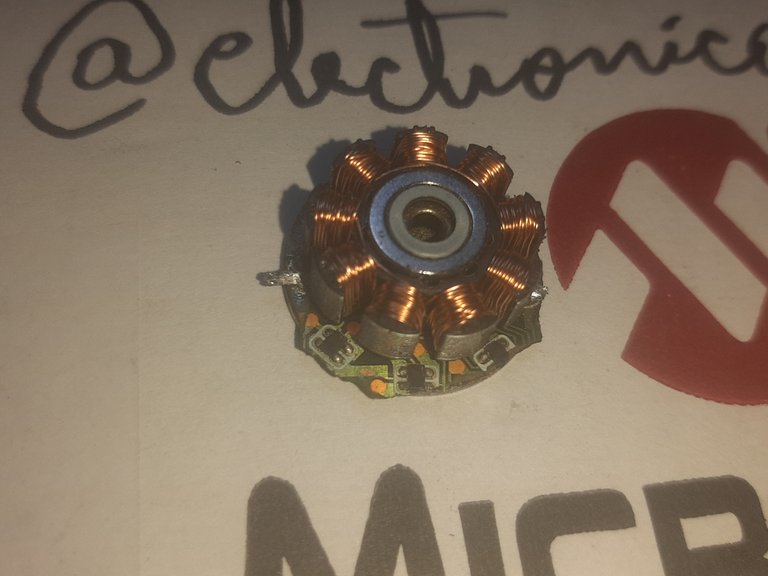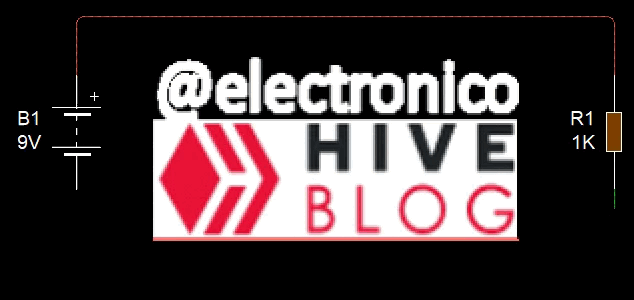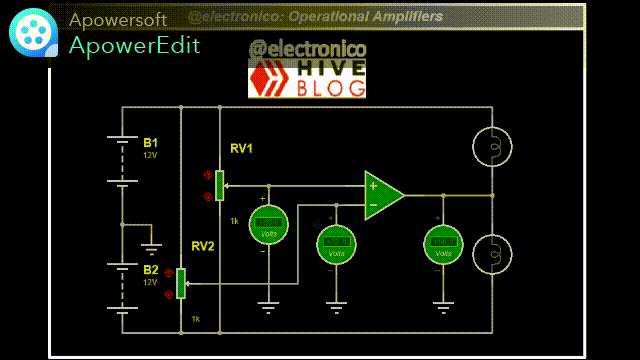HALL Effect Sensor EN/ES
While it is true that we were able to turn a brushless motor (for the first time in the blog) it is also true that the way it was done is not the most efficient. Why?
Because That was a blind control, technically known as open loop control, this means that we send the signals for the motor to turn but if we cannot see the motor we have no way to know if it is turning correctly and as the system has no eyes we can say that it is a blind control because there is no feedback to monitor that everything is going well.
The correct way is to have a feedback that allows us to identify the exact moment in which a pulse has caused the desired effect, since the magnets should never be aligned with the energized coils the change in the sequence must be made before this happens to obtain the highest efficiency.
But... each turn is 6 sequences, imagine a motor spinning at 50,000 RPMs, that is, 833 turns per second which multiplied by the 6 sequences gives us approximately 5000 measurements and changes in the sequence every second. These are fast actions, that is why today we will learn what is a HALL effect sensor for future use in the design of our circuits with brushless motors.
Si bien es cierto que ya pudimos hacer girar un motor brushless (por primera vez en el blog) también lo es que la forma en que se hizo no es la más eficiente. ¿Por qué?
Porque Aquello fue un control ciego, tecniacmente conocido como control en bucle abierto o lazo abierto, esto significa que enviamos las señales para que el motor gire pero si no podemos ver el motor no tenemos forma de saber si está girando correctamente y como el sistema no tiene ojos se puede decir que es un control ciego porque no existe un feedback para monitorear que todo vaya bien.
La forma correcta es teniendo una retroalimentación que nos permita identificar el momento exacto en el que un pulso ha causado el efecto deseado, ya que los imanes nunca se deben alinear con las bobinas energizadas se debe hacer el cambio en la secuencia antes que esto ocurra para obtener la mayor eficiencia.
Pero... cada vuelta son 6 secuencias, imagina un motor girando a 50.000 RPMs, es decir, 833 vueltas por segundo que multiplicado por las 6 secuencias nos da aproximadamente 5000 mediciones y cambios en la secuencia cada segundo. Son acciones rápidas, es por eso que hoy aprenderemos lo que es un Sensor de efecto HALL para en el futuro usarlo en el diseño de nuestros circuitos con motores brushless.

HALL Effect |
|---|
This is something as wonderful as it is complex and useful in many incredible applications, however I would like to explain it as simple as possible without mathematical equations but that it can be understood in a broad way, not without first giving credits to the one who first noticed this phenomenon during a laboratory experiment (For his thesis) Edwin Herbert Hall (1855-1938).
Imagine that we have a load connected to a battery, there is a current flowing between the positive of the battery, it passes through the load and reaches the negative of the battery.
Esto es algo tan maravilloso como complejo y útil en muchas aplicaciones increíbles, sin embargo me gustaría explicarlo lo más simple posible sin ecuaciones matemáticas pero que se pueda comprender de forma amplia, no sin antes dar créditos a quien notó este fenómeno por primera vez durante un experimento de laboratorio (Para su tesis) Edwin Herbert Hall (1855-1938).
Imagina que tenemos una carga conectada a una batería, hay una corriente fluyendo entre el positivo de la batería, pasa por la carga y llega al negativo de la batería.

We know that there is a current flowing through the conductor, but if we try to measure the voltage on any section of the conductor our voltmeter will give 0V.
Sabemos que hay una corriente circulando por el conductor, pero si intentamos medir el voltaje en cualquier tramo del conductor nuestro voltímetro arrojará 0V.

As I am placing both tips of the voltmeter on the same node (conductor) it could be said that I am referencing my measurement between two equal values and as voltage is the potential difference between two points (subtraction) when subtracting two variables with the same value the result is 0. So far I have not said anything important. 😊
The phenomenon we want to point out occurs if we subject that same conductor to the presence of a magnetic field, the charges flowing through the conductor will align at two ends of it creating an electric field, at the same time you can measure a voltage on the conductor called Hall Voltage.
Como estoy colocando ambas puntas del voltímetro en el mismo nodo (conductor) se podría decir que estoy referenciando mi medición entre dos valores iguales y como el voltaje es la diferencia de potencial entre dos puntos (resta) al restar dos variables con el mismo valor el resultado es 0. Hasta aquí no he dicho nada importante. 😊
El fenómeno que queremos señalar ocurre si sometemos ese mismo conductor a la presencia de un campo magnético, las cargas que fluyen a través del conductor se alinearan a dos extremos del mismo creando un campo eléctrico, al mismo tiempo se puede medir un voltaje en el conductor denominado Voltaje Hall.

I can define in my own words according to the above that the Hall Effect is the effect caused by a magnetic field on the behavior of a conductor when an electric current perpendicular to the magnetic field flows through it.
This effect can be translated into an electric field by charge separation in the conductor and this charge separation can be measured as a potential difference (voltage) present in the conductor (we will take advantage of the variable that suits 😉).
Puedo definir con mis propias palabras según todo lo anterior que el Efecto Hall es el efecto que causa un campo magnético en el comportamiento de un conductor cuando por éste fluye una corriente eléctrica perpendicular al campo magnético.
Este efecto se puede traducir en un campo eléctrico por separación de cargas en el conductor y esta separación de cargas se puede medir como una diferencia de potencial (voltaje) presente en el conductor (aprovecharemos la variable que convenga 😉).
HALL Effect Sensor |
|---|
A Hall Effect sensor is a semiconductor component capable of taking advantage of the Hall Effect to send signals to an electronic system that can be interpreted for multiple applications among which we can mention:
- Magnetic field measurements (magnetic flux density)
- Potential-free current measurements (current sensor)
- Non-contact signal transmitter
- Material thickness measuring devices
At this point it is necessary to remember that brushless motors usually use magnets in the rotor, this implies that we have rotating magnets, if we place Hall sensors we can obtain a voltage at the exact moment when the magnet is in front of the sensor and thus know at all times the position of the rotor.
Un sensor de Efecto Hall es un componente semiconductor capaz de aprovechar el Efecto Hall para enviar señales a un sistema electrónico que pueden ser interpretadas para múltiples aplicaciones entre las que se pueden mencionar:
- Mediciones de campos magnéticos (densidad de flujo magnético)
- Mediciones de corriente sin potencial (sensor de corriente)
- Emisor de señales sin contacto
- Aparatos de medida del espesor de materiales
En este punto es necesario recordar que los motores brushless suelen usar imanes en el rotor, esto implica que tenemos imanes girando, si colocamos sensores Hall podemos obtener un voltaje en el momento exacto en el que el imán esté frente al sensor y de esta forma conocer en todo momento la posición del rotor.
 IMeowbot, Wikimedia Commons
IMeowbot, Wikimedia CommonsSome brushless motors have Hall sensors at strategic points and their signal is used to make the sequence changes optimizing the motor performance, other brushless motors do not have Hall sensors, however they use another similar phenomenon but all this will be discussed in more detail when we apply what we have learned here to brushless motors controlled with three-phase bridge.
Algunos motores brushless llevan sensores Hall en puntos estratégicos y su señal se utiliza para hacer los cambios de la secuencia optimizando el rendimiento del motor, otros motores brushless no llevan sensores Hall, sin embargo usan otro fenómeno similar pero todo esto lo abordaremos con más detalles cuando apliquemos lo aprendido aquí a motores brushless controlados con puente trifásico.

If you want to give an extra boost to the blog with a donation you can send it to the addresses:
Si quieres darle un impulso extra al blog con una donación puedes enviarla a las direcciones:
BEP-20: 0x5Aee5e3e3ED3203e77eF0d8Bb3E3a420E5229Ce0
ERC-20: 0x5Aee5e3e3ED3203e77eF0d8Bb3E3a420E5229Ce0
Arbitrum One: 0x5Aee5e3e3ED3203e77eF0d8Bb3E3a420E5229Ce0
Polygon: 0x5Aee5e3e3ED3203e77eF0d8Bb3E3a420E5229Ce0
Avalanche: 0x5Aee5e3e3ED3203e77eF0d8Bb3E3a420E5229Ce0
Thanks for your contribution to the STEMsocial community. Feel free to join us on discord to get to know the rest of us!
Please consider delegating to the @stemsocial account (85% of the curation rewards are returned).
Thanks for including @stemsocial as a beneficiary, which gives you stronger support.
Congratulations @electronico! You have completed the following achievement on the Hive blockchain And have been rewarded with New badge(s)
Your next target is to reach 50000 upvotes.
You can view your badges on your board and compare yourself to others in the Ranking
If you no longer want to receive notifications, reply to this comment with the word
STOPCheck out our last posts: